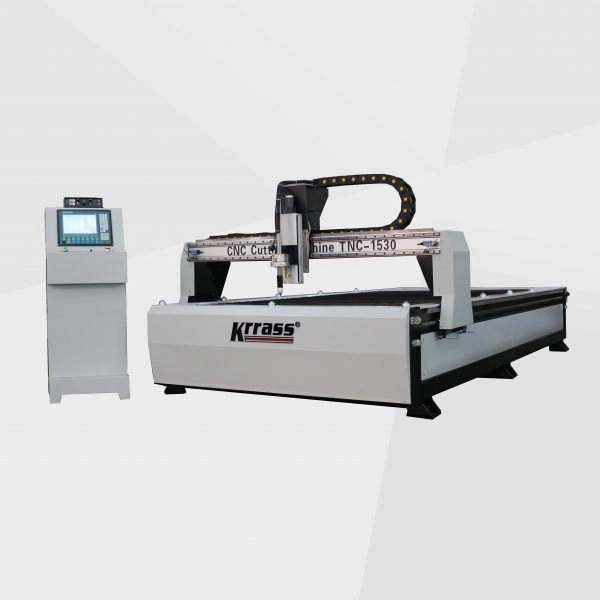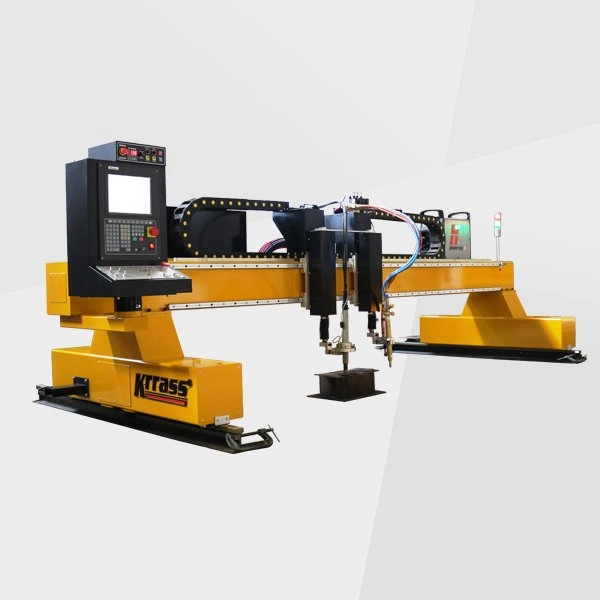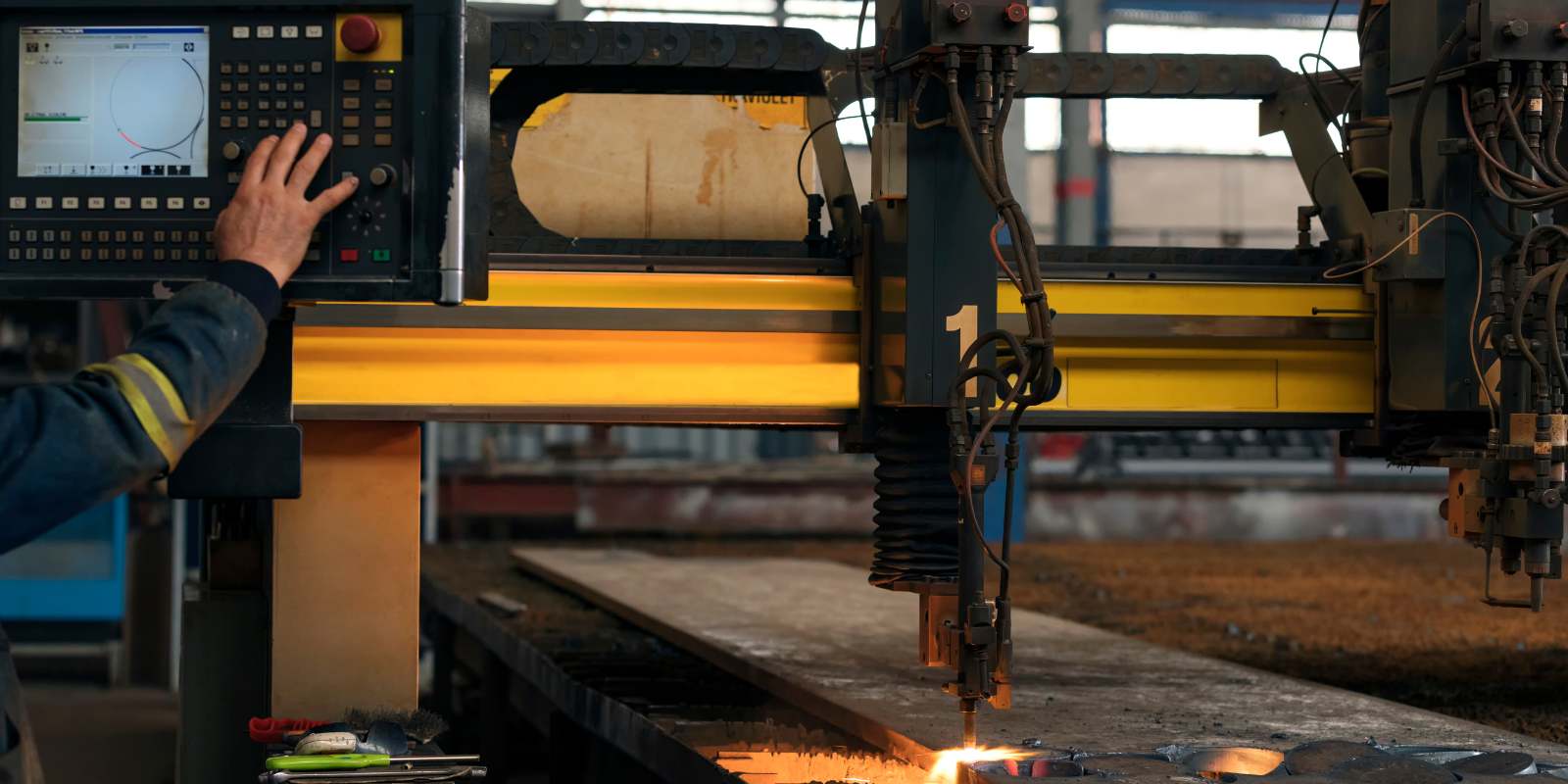In the critical decision-making process of Plasma Cutting vs. Oxygen Cutting for your fabrication needs, the choice is pivotal and hinges on a multitude of factors.This choice hinges on a multitude of factors, such as the specific metal in question, the material’s thickness, and the financial implications. Oxy-fuel cutting emerges as the superior method for handling robust, thicker metals. Conversely, for metals where precision is paramount, such as stainless steel and aluminum, plasma cutting stands out as the quintessential tool.
The distinction between plasma and oxy-fuel cutting is not merely a matter of preference but a strategic decision based on the unique requirements of each project. Let’s delve into a comprehensive analysis of these two prevalent cutting technologies to ascertain which aligns best with your operational needs.
Plasma Cutting: The Path to Precision
Plasma cutting stands as a pinnacle of technological advancement in the realm of metal fabrication, offering a symphony of precision and efficiency. This process, which harnesses the power of an ionized and electrically conductive gas known as plasma, has revolutionized the way we approach cutting conductive materials.
At the heart of this process lies the plasma cutter, a sophisticated apparatus that initiates its operation by imparting energy to a typically inert gas, such as compressed air. This energy, sourced from electricity, disrupts the equilibrium of the gas molecules within a specialized chamber nestled between an electrode and a nozzle. The result is the formation of plasma—a state of matter characterized by its electrical conductivity and capacity to slice through metal with remarkable finesse.
The plasma cutter’s prowess is further amplified by the air pressure that propels the plasma through the nozzle, creating a stream so focused and potent that it can penetrate metals up to an inch thick with ease. The intensity of the plasma arc is directly proportional to the energy conferred by the plasma cutter, which means that higher energy levels translate to hotter arcs and, consequently, greater cutting capabilities.
This method’s versatility is not limited to the workshop floor; it extends to various operational contexts, including automotive repair, industrial construction, and even the meticulous work of salvage and scrapping operations. The portability of plasma cutting systems, some as light as 20 pounds, combined with their compatibility with engine-driven welder/generators, makes them an indispensable tool across numerous job sites.
When it comes to applications, plasma cutting is particularly adept at handling metals like steel, brass, and copper—materials that demand a high degree of precision. The process is also a mainstay in computer numerical control (CNC) applications, where its rapid cutting speeds and pinpoint accuracy are essential.
During its working process, it not only cuts metal;it’s about doing so with a finesse that leaves behind a trail of precision and versatility. Here are the key benefits that make plasma cutting a standout choice for professionals:
- Versatility in Metal Types: Plasma cutting is not limited by the diversity of metals. It can effortlessly cut through a vast array of electrically conductive metals, including but not limited to, various grades of steel, stainless steel, aluminum, copper, and more, up to a thickness of 2 inches.
- Enhanced Cutting Flexibility: The scope of plasma cutting extends beyond simple straight cuts. It encompasses stack cutting, beveling, intricate shape cutting, gouging, and piercing of metals, providing a comprehensive solution for complex fabrication tasks.
- Speed and Precision: When it comes to thinner metals, plasma cutting outpaces oxy-fuel by a significant margin, delivering precise cuts at accelerated speeds with minimal material distortion, ensuring that productivity never takes a backseat.
- Cleaner Cuts: The minimal slag production of plasma cutting results in smoother edges, reducing the need for secondary finishing processes and allowing for immediate continuation with additional fabrication steps.
- Shaped Metal Mastery: Plasma cutting shines when dealing with shaped metals such as domes or tubes. Its ability to navigate angles, channels, and curves with precision makes it an invaluable tool for custom and specialized metalwork.
- Cost-Effectiveness: With no requirement for preheating and a simplified operational approach, plasma cutting is not only user-friendly but also cost-efficient, reducing both time and financial investment.
- Operational Simplicity: The relative ease of use when compared to oxy-fuel systems is a testament to the user-centric design of plasma cutting technology. This simplicity translates to minimal training requirements and cleanup efforts.
- Safety First: The absence of explosive gases and open flames in plasma cutting systems underscores the commitment to safety, ensuring a secure working environment for operators.
In the realm of metal fabrication, plasma cutting is not just a method; it’s a testament to the industry’s evolution. It embodies the perfect amalgamation of speed, precision, and adaptability, making it an indispensable asset in the cutting and gouging of conductive metals. As we continue to push the boundaries of what’s possible in metal fabrication, plasma cutting remains a beacon of innovation, guiding us toward ever more efficient and precise production methods.

Oxy Cutting: The Powerhouse for Thickness
A time-honored technique, oxygen cutting relies on the combustion of pure oxygen with fuel gases like acetylene, propane, or propylene. This exothermic reaction generates intense heat, melting the metal and allowing for precise division. The process orchestrates an elemental dance between oxygen and metal, resulting in the formation of iron oxide (commonly known as slag), which is then efficiently expelled from the cut using a powerful jet of oxygen.
The choice of gas is not arbitrary; it is a carefully considered choice that requires keen attention to cut quality, required warm-up time, and the thickness of the existing metal. Each gas has its own unique properties that affect the cutting process in subtle yet important ways. Acetylene has a high flame temperature and allows for fast preheating and cutting, while propane, propylene and natural gas stand out for their cost-effectiveness and low oxygen consumption.
The power of oxygen cutting is most dazzling when facing large thickness of metal. When plasma cutting reached its threshold, oxygen cutting took over, cutting huge sections at a cost-effectiveness that masked its cut quality. This approach does not shy away from the importance and scale of industrial needs, but meets them with a precise and powerful flame.
This method is particularly advantageous when dealing with metals of considerable thickness, where alternative cutting technologies might falter. Here are the salient benefits that oxygen cutting brings to the table:
- Superiority in Thick Metal Cutting: Oxygen cutting excels in slicing through dense metals, effortlessly handling carbon steel ranging from 2 to 6 inches in thickness, and achieving high cut speeds. This proficiency extends to even thicker steels, with some systems adept at cutting materials over 20 inches thick.
- Enhanced Productivity with Multiple Torches: Equipping your oxygen cutting machine with several torches can significantly boost productivity and reduce processing time, making it an efficient choice for large-scale operations.
- Metallurgical Precision: The process yields smooth, vertical planes of cut, ensuring metallurgically pristine oxidized surfaces, which are essential for subsequent manufacturing processes.
- Heat-Affected Zone Treatment: Oxygen cutting not only cuts but also carbonizes and hardens within the heat-affected zone, providing a dual function that can be beneficial in certain applications.
- Portability for Field Operations: The absence of a need for an electrical power source renders oxygen cutting systems highly portable, with some compact models weighing approximately 35 pounds. This portability is a boon for fieldwork, allowing for cutting in almost any location.
- Extended Reach for Operator Safety: Oxygen torches are available in extended lengths, which serve to distance the operator from the heat, flames, and slag, enhancing safety during the cutting process.
- Versatility of Process: Beyond cutting, oxygen torches offer a range of capabilities including welding, brazing, soldering, heating, and gouging, making them a multi-functional tool in the metalworking arsenal.
In the magnificent tapestry of metal fabrication, oxy-cutting is woven into strong threads, a technology that has not only withstood the test of time but continues to evolve. It is a craft that demands respect for its ability to split the toughest materials, a skill that balances the raw power of elemental fire with the finesse of modern technology. As we move into the future of manufacturing, oxy-cutting remains a cornerstone, reliable and respected ally in the ever-evolving world of metal processing.

Which One Suit You?
In the metal fabrication industry, the debate of Plasma Cutting vs. Oxygen Cutting is a critical one, with the final decision resting on a strategic assessment of your specific needs and operational goals. This concluding segment of your podcast article should encapsulate the essence of the discussion, guiding listeners towards a resolution that aligns with their unique requirements.
Plasma Cutting vs. Oxygen Cutting: The Verdict
As we approach the conclusion of this discourse, it’s essential to reiterate that the choice between Plasma Cutting vs. Oxygen Cutting is not about superiority but suitability.
Cost Analysis in Plasma Cutting vs. Oxygen Cutting
Cost considerations are paramount in the Plasma Cutting vs. Oxygen Cutting conversation. While plasma systems may require a higher initial outlay, they can offer long-term savings through increased efficiency and speed. Oxygen cutting systems, known for their lower startup costs, might lead to higher consumable expenses over time.
Quality and Precision: Plasma Cutting vs. Oxygen Cutting
Quality and precision are the hallmarks of plasma cutting, making it a frequent topic in the Plasma Cutting vs. Oxygen Cutting discussion. If your projects demand the highest quality cuts with minimal secondary finishing, plasma cutting is the method of choice. Oxygen cutting, with its broader application, is suitable where precision is less critical.
Operational Considerations in Plasma Cutting vs. Oxygen Cutting
The operational environment plays a crucial role in the Plasma Cutting vs. Oxygen Cutting decision. Plasma cutting requires electrical power and a controlled environment, whereas oxygen cutting offers the flexibility of portability and is not reliant on electricity, making it ideal for on-site jobs.
Plasma Cutting vs. Oxygen Cutting: Making the Choice
As you weigh the factors in the Plasma Cutting vs. Oxygen Cutting debate, consider the types of metals you cut, the range of thicknesses, and the desired cut quality. Consult with industry experts, and if possible, witness demonstrations to see each method in action.
While plasma and oxy-fuel have their place in most metalworking applications, your operation can benefit from using both systems simultaneously. For help determining which technology is best for your individual needs, contact KRRASS today.





